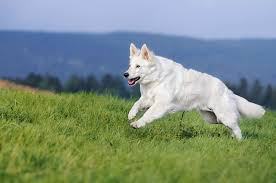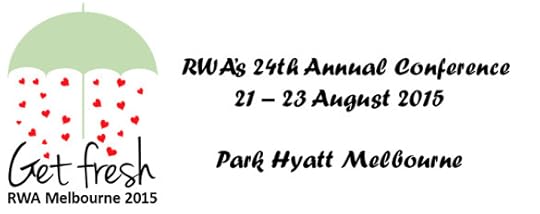Jennifer Scoullar's Blog, page 11
February 28, 2015
The Animal Characters Of ‘Turtle Reef’
Today, author Sydney Smith interviews me about the animals in my upcoming release, Turtle Reef.
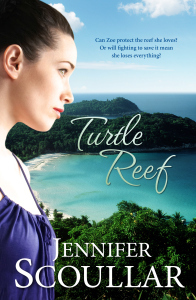 SYDNEY: Jenny, your latest novel, Turtle Reef, will soon come out. As with Currawong Creek, the story contains plenty of animal characters and a child with an intellectual disability. One of the interesting things about your fiction is the theme of “wise” animals and children like Jack in Currawong and Josh in Turtle Reef―wise because they feel comfortable in their place in the world, comfortable with themselves, while adult humans stuff things up left, right and centre. Can you talk about how you see these wise animals and children?
SYDNEY: Jenny, your latest novel, Turtle Reef, will soon come out. As with Currawong Creek, the story contains plenty of animal characters and a child with an intellectual disability. One of the interesting things about your fiction is the theme of “wise” animals and children like Jack in Currawong and Josh in Turtle Reef―wise because they feel comfortable in their place in the world, comfortable with themselves, while adult humans stuff things up left, right and centre. Can you talk about how you see these wise animals and children?
JENNIFER: I believe children haven’t strayed as far from the animal, and thus instinctively understand the natural world and their place in it. I struggle with our modern disconnect from nature. Most of us live our lives so removed from the elemental that we rarely even touch the earth. We tell ourselves that we are separate from the natural world. But I worry about the cost to our declining environment. Not to mention the cost to our hearts. The rural fiction genre is so popular because readers are hungry to re-engage with nature, to ground themselves. Jon Krakauer’s Into The Wild tapped into this vein. The wildly successful movie, Avatar, did the same. For me, losing touch with wildness means losing touch with ourselves. In a review of my debut novel, Wasp Season, Diana Jenkins (News Editor, Varuna National Writers’ Centre) put it this way :
‘Jennifer’s a changeling, in my mind, someone who’s not really human at all, or at least not in the conventional sense. She’s too alive to the possibilities and voices of other living things for that. But with what eyes does she see? How does she so convincingly inhabit the wasps? I think it’s because she’s somehow emerged with her childlike wonder intact. Remember foraging around at the bottom of every garden or wood or forest or glen you came across as a child? How fantastic it seemed, how secretive? How full of drama and exquisite beauty? I remember it really clearly, and when I think of Jennifer’s eye on the natural world I imagine that I just might be able to reach that magic garden again.’
SYDNEY: So when you started to think about writing Turtle Reef, how did you come to choose which aspect of the drama of the Great Barrier Reef to write about? Would you say part of your role as a writer is to educate readers about how to correct old mistakes in the management of the natural world?
 JENNIFER: The Great Barrier Reef, the largest coral ecosystem on our blue planet, holds a special place in the hearts of most Australians. As you suggest in your question, it has so many aspects that lend themselves to dramatic stories. I tell human and animal tales side by side, exploring how we exist together in one habitat. Choosing a cane farmer and marine zoologist as my main protagonists allowed me to look at the varied parts the reef plays in the life of coastal communities. It was also an excuse to write about dugongs and dolphins!
JENNIFER: The Great Barrier Reef, the largest coral ecosystem on our blue planet, holds a special place in the hearts of most Australians. As you suggest in your question, it has so many aspects that lend themselves to dramatic stories. I tell human and animal tales side by side, exploring how we exist together in one habitat. Choosing a cane farmer and marine zoologist as my main protagonists allowed me to look at the varied parts the reef plays in the life of coastal communities. It was also an excuse to write about dugongs and dolphins!
My aim as a writer is to entertain. It’s not my role to educate readers in any way. I simply present issues that confront people in regional areas on a day-to-day basis. However, we are so often on a collision course with nature. If my stories spark debate about conservation, that’s a bonus.
SYDNEY: Can you talk a bit about how you build an animal character? You’ve told me already about Einstein, the octopus. I was instantly captivated (and still think about inklets, baby octopi!). How much anthropomorphism goes into it? Or do you think the key to creating an animal character lies elsewhere?
JENNIFER: The first thing I do when building animal characters is to learn everything I can about their lives. This is my favourite part of the writing process. I’ve been an amateur naturalist for as long as I can remember, and love nothing more that immersing myself in the world of a brumby, or goose, or dolphin. Then I build my animal character much like I would any other, imagining its personality, back-story and motivation. In my view, anthropomorphism is a useful tool for navigating this planet that we share with other animals.
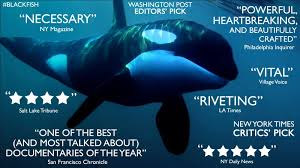 Take the recent documentary film, Blackfish, for example. It tells the story of Tilikum, a captive Orca who killed several of his trainers. It’s an emotionally-wrenching, tightly-structured tale that relies on us empathising with the whale’s plight. Thoughtful, balanced anthropomorphism helps us perceive the kinship shared by humans and animals. Can I add, Only The Animals, by Ceridwen Dovey, has been long-listed for the Stella Prize. In this astonishing anthology, the souls of ten animals that died in human conflicts over the last century tell their own stories. The old taboo against anthropomorphism is lifting, and it’s a good thing, too.
Take the recent documentary film, Blackfish, for example. It tells the story of Tilikum, a captive Orca who killed several of his trainers. It’s an emotionally-wrenching, tightly-structured tale that relies on us empathising with the whale’s plight. Thoughtful, balanced anthropomorphism helps us perceive the kinship shared by humans and animals. Can I add, Only The Animals, by Ceridwen Dovey, has been long-listed for the Stella Prize. In this astonishing anthology, the souls of ten animals that died in human conflicts over the last century tell their own stories. The old taboo against anthropomorphism is lifting, and it’s a good thing, too.
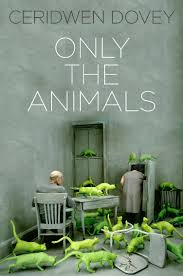 SYDNEY: Hm. Only the Animals sounds like a must-read to me. Only, I’m scared I’ll bawl my eyes out! Getting back to how you build an animal character, you immersed yourself in the worlds of several marine animals. Have you got any insights to impart about your discoveries?
SYDNEY: Hm. Only the Animals sounds like a must-read to me. Only, I’m scared I’ll bawl my eyes out! Getting back to how you build an animal character, you immersed yourself in the worlds of several marine animals. Have you got any insights to impart about your discoveries?
JENNIFER: Yes Sydney, Only The Animals may not be for you. It’s very confronting and you’d probably cry. I did!
Getting back to the animals in Turtle Reef, I too am intrigued by my octopus character, Einstein. These misunderstood creatures are usually cast in an evil light. Take the giant, murderous octopus from 20,000 Leagues Under The Sea, for example, or Ursula the sea witch from The Little Mermaid. I think the octopus gets such bad press because it is an alarmingly alien animal. Eight suckered arms. Three hearts pumping blue, copper-based blood around its boneless body. However, I’m a big fan of this jet-powered invertebrate. Master of camouflage, a shape-shifter, and with an intelligence approaching that of a dog. And when it comes to maternal self-sacrifice? Well, you’ll just have to read the book …
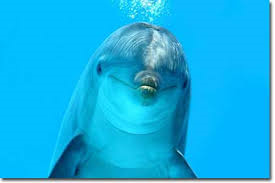 I also learned a lot about dolphins. Recent scientific research suggests they have a wider range of emotions than humans, a culture that is handed down through generations, and personal names. Unlike us, they are conscious breathers. This was discovered in the 1960s, when researchers tried to anaesthetise dolphins. As soon as they fell unconscious, they stopped breathing and died. Depressed captive dolphins have been known to commit suicide by simply deciding not to breathe. In fact, the more I learned about dolphins, the more firmly opposed I became to them being held in marine parks. For example Dolphins have a sixth sense, sonar, which becomes problematic when they are confined. Sound bounces off the concrete tanks, confusing and irritating them. Sonar is dolphins’ most effective tool for learning about the world around them. Thwarting their ability to use this sonar is tantamount to blinding them.
I also learned a lot about dolphins. Recent scientific research suggests they have a wider range of emotions than humans, a culture that is handed down through generations, and personal names. Unlike us, they are conscious breathers. This was discovered in the 1960s, when researchers tried to anaesthetise dolphins. As soon as they fell unconscious, they stopped breathing and died. Depressed captive dolphins have been known to commit suicide by simply deciding not to breathe. In fact, the more I learned about dolphins, the more firmly opposed I became to them being held in marine parks. For example Dolphins have a sixth sense, sonar, which becomes problematic when they are confined. Sound bounces off the concrete tanks, confusing and irritating them. Sonar is dolphins’ most effective tool for learning about the world around them. Thwarting their ability to use this sonar is tantamount to blinding them.
SYDNEY: That is so interesting, Jenny. Isn’t it funny how suggestible we are. If we’re presented with an animal as a hostile being, we become scared of the whole species. But present us with a friendly version and we love the whole species. How much of the drama that unfolds in Turtle Reef is shaped by human preconceptions about certain animals? Maybe you can talk about the contrast between the way Josh responds to these animals and the way some adult humans do.
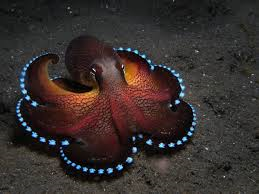 JENNIFER: There are lots of preconceptions being made about the characters in Turtle Reef, some negative, some positive, but mostly unwarranted. The instant aversion people feel towards Einstein, the octopus, for example. The automatic assumption that Kane the dolphin, with his perpetual smile, is peaceful and happy in captivity. Josh has a brain injury, so it’s assumed he is slow. Aisha, the Arabian mare, is branded a rogue, and nobody challenges this. However, with one exception, Josh isn’t guilty of pre-judging the other characters in Turtle Reef. He takes them as he finds them. So does Zoe. This is their strength. They can see past these preconceptions to the truth.
JENNIFER: There are lots of preconceptions being made about the characters in Turtle Reef, some negative, some positive, but mostly unwarranted. The instant aversion people feel towards Einstein, the octopus, for example. The automatic assumption that Kane the dolphin, with his perpetual smile, is peaceful and happy in captivity. Josh has a brain injury, so it’s assumed he is slow. Aisha, the Arabian mare, is branded a rogue, and nobody challenges this. However, with one exception, Josh isn’t guilty of pre-judging the other characters in Turtle Reef. He takes them as he finds them. So does Zoe. This is their strength. They can see past these preconceptions to the truth.
Thank you for your thought-provoking questions Sydney, and I look forward to sharing the story of Turtle Reef with my readers very soon!
Pre-order Turtle Reef here at Bookworld, Booktopia and Amazon

February 21, 2015
A Tribute To Missy
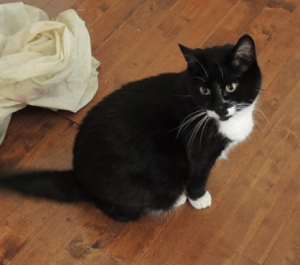 Last week I introduced our lovely new puppy Rex, just beginning his adventures in this world. Well, life has come full circle with the death of Missy. In this post I’d like to celebrate the life of a very special cat. This is her story. We run a small boarding kennel and cattery here at Pilyara, and one day fifteen years ago, a young couple arrived with a dog and six-month old kitten in tow, Max and Missy. They were going away for the Australia Day long weekend, and had booked their animals in for three nights. The boyfriend turned up on cue at the end of the stay – by himself.
Last week I introduced our lovely new puppy Rex, just beginning his adventures in this world. Well, life has come full circle with the death of Missy. In this post I’d like to celebrate the life of a very special cat. This is her story. We run a small boarding kennel and cattery here at Pilyara, and one day fifteen years ago, a young couple arrived with a dog and six-month old kitten in tow, Max and Missy. They were going away for the Australia Day long weekend, and had booked their animals in for three nights. The boyfriend turned up on cue at the end of the stay – by himself.
‘I’m only collecting Max,’ he said.
‘Why?’
‘Me and my girlfriend broke up. I’m taking the dog and she’s taking the cat.’
The girlfriend didn’t come for Missy that day, or the next, or the next … She didn’t answer phone calls. Weeks passed. I began to feel sorry for the half-grown black-and-white kitten, languishing in the cattery. I bought her inside. Missy was a nondescript little thing – quiet and shy, with a tiny meow. She fell asleep on my bed.
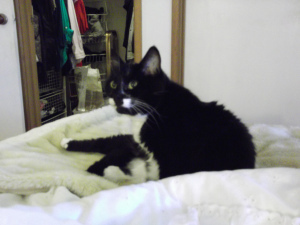 Nobody ever came for Missy. Lucky for us. Her unfailing good-nature soon won us over. The ideal cat – loyal, beautifully behaved and gentle as a lamb. Sometimes she would sway slightly when sitting, as if to some rhythm only she could hear. She never scratched the furniture, and always used her carpet post. She never made a mess and always used her litter tray. Unlike the other cats, she never scratched the kids during an over-enthusiastic hug, but patiently put up with their clumsy affection. She wasn’t a hunter.The native wildlife was perfectly safe around her. One day a mouse famously ran across the carpet and into her tail. Missy jumped a mile!
Nobody ever came for Missy. Lucky for us. Her unfailing good-nature soon won us over. The ideal cat – loyal, beautifully behaved and gentle as a lamb. Sometimes she would sway slightly when sitting, as if to some rhythm only she could hear. She never scratched the furniture, and always used her carpet post. She never made a mess and always used her litter tray. Unlike the other cats, she never scratched the kids during an over-enthusiastic hug, but patiently put up with their clumsy affection. She wasn’t a hunter.The native wildlife was perfectly safe around her. One day a mouse famously ran across the carpet and into her tail. Missy jumped a mile!
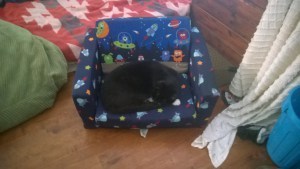 I became her favourite. Wherever I went, so did Missy. If I was writing in the office, or dining room or in bed, she was with me. If I spoke to her, she always responded with a considered mew. My youngest son, Tyson, dubbed her my writing cat. If I was stuck in my story he would say, ‘You need your writing cat,‘ and unceremoniously dump her on my lap. Hey presto, the ideas would flow. I began to believe it myself – that Missy was my muse.
I became her favourite. Wherever I went, so did Missy. If I was writing in the office, or dining room or in bed, she was with me. If I spoke to her, she always responded with a considered mew. My youngest son, Tyson, dubbed her my writing cat. If I was stuck in my story he would say, ‘You need your writing cat,‘ and unceremoniously dump her on my lap. Hey presto, the ideas would flow. I began to believe it myself – that Missy was my muse.
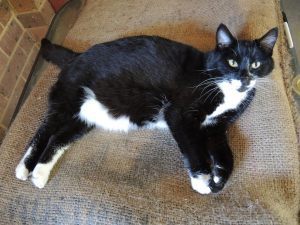 She never cost me anything. She suffered no injury or illness, no expensive medications, or operations or special diets. She never caused us a moment’s worry, and gave our family enormous pleasure – a perfect life, well-lived. She even died well. That morning she had some breakfast, played with her toy mouse for a while, and went to sleep on the bed in the spare room. Fat and shiny, calm and happy as ever. Tyson went in to to cuddle her. It was still the first thing he did every morning, although he’s now nineteen. ‘Mum,’ he called, his voice urgent. I hurried in … Missy had passed away, still curled up in the blankets. Tyson’s tears flowed as freely as if he was four again. He wasn’t the only one. There was no sign of distress in her pose. Her expression was peaceful. She died in bed, in her sleep, which is more than most of us can hope for. She spared us that heart-breaking last trip to the vet, the sleepless nights because she was sick, the fears for her. She was simply there one minute, and gone the next – an angel even in death. Thank you Missy! Wonder if I’ll be able to write without you?
She never cost me anything. She suffered no injury or illness, no expensive medications, or operations or special diets. She never caused us a moment’s worry, and gave our family enormous pleasure – a perfect life, well-lived. She even died well. That morning she had some breakfast, played with her toy mouse for a while, and went to sleep on the bed in the spare room. Fat and shiny, calm and happy as ever. Tyson went in to to cuddle her. It was still the first thing he did every morning, although he’s now nineteen. ‘Mum,’ he called, his voice urgent. I hurried in … Missy had passed away, still curled up in the blankets. Tyson’s tears flowed as freely as if he was four again. He wasn’t the only one. There was no sign of distress in her pose. Her expression was peaceful. She died in bed, in her sleep, which is more than most of us can hope for. She spared us that heart-breaking last trip to the vet, the sleepless nights because she was sick, the fears for her. She was simply there one minute, and gone the next – an angel even in death. Thank you Missy! Wonder if I’ll be able to write without you?
We have plenty of other cats and dogs to comfort us, but none like Missy. This post is to celebrate the life of a much-loved, humble little cat who we were proud to call our own. Missykins, you never put a foot wrong, darling! If I can live my life half as well, I shall be happy. Rest in peace. I miss you … 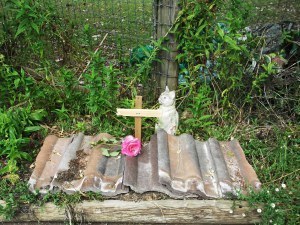


February 15, 2015
Our New Dog

Rex at 6 weeks
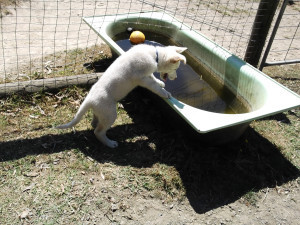
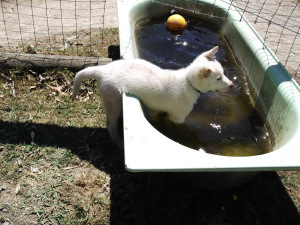 We have a new dog, a white German Shepherd puppy named Rex (after the famous Inspector Rex). I’ve had shepherds before, even bred them for a few years, but never a white one. The colour is considered a flaw in the show fraternity and, in the past, white pups have been routinely drowned. A great shame, as this colour has a long and proud history in the evolution of the breed. A white herding dog named Greif was the grandfather of Horand von Grafrath, the dog acknowledged as the foundation of all contemporary German Shepherd bloodlines.
We have a new dog, a white German Shepherd puppy named Rex (after the famous Inspector Rex). I’ve had shepherds before, even bred them for a few years, but never a white one. The colour is considered a flaw in the show fraternity and, in the past, white pups have been routinely drowned. A great shame, as this colour has a long and proud history in the evolution of the breed. A white herding dog named Greif was the grandfather of Horand von Grafrath, the dog acknowledged as the foundation of all contemporary German Shepherd bloodlines.
White shepherds are not albinos, and have no particular health concerns, so when a pup became available locally, we decided to welcome him to our family. White dogs are said to have a softer, mellower, more sensitive personality than their traditionally coloured cousins. This is born out with Rex – he’s a very chilled out boy!
He’s nine weeks old now, and his ears are starting to stand erect, just as they should. I couldn’t be happier 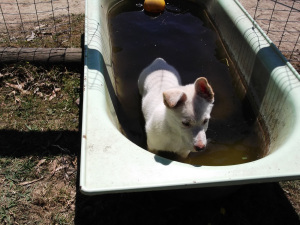 with him and heartily recommend the breed. So if you’re looking for a family dog that –
with him and heartily recommend the breed. So if you’re looking for a family dog that –
Is strong, athletic, and natural-looking
Has a quieter personality than a black and tan German Shepherd
Thrives on challenging activities and exercise
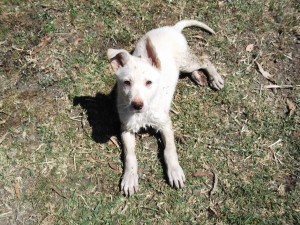 Is exceptionally intelligent, loyal, and versatile — when well-socialised and well-trained, can learn and do almost anything
Is exceptionally intelligent, loyal, and versatile — when well-socialised and well-trained, can learn and do almost anythingMakes a sensible watchdog and is not inappropriately hostile
– then a White German Shepherd may be right for you.
This last photo is what I hope Rex will look like when he’s all grown up! :)

February 8, 2015
Celebrating Women In Conservation
Bush Heritage Australia and Trust for Nature are pleased to invite supporters to the fourth annual Celebrating Women In Conservation fundraising breakfast 2015.
Held in Melbourne in the week of International Women’s Day, this fourth annual breakfast is an opportunity to discover new perspectives, as well as celebrating the role that women play in conservation. I’m hoping to be there. It’s for a very good cause!
The MC is science journalist and bestselling author Tanya Ha.
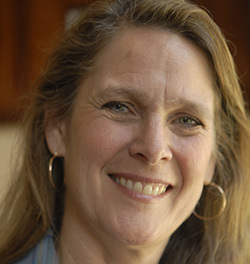
Molly Harriss Olsen
Guest speaker Molly Harriss Olson will share her transformative ideas about decision making in conservation. Named as one of the 2014 Australian Financial Review and Westpac 100 Women of Influence, Molly has convened, chaired and been a member of numerous sustainability initiatives over more than three decades, including The World Economic Forum’s Global Leaders of Tomorrow Sustainability Index Initiative. Molly worked in the White House as the Founding Executive Director of the President’s Council on Sustainable Development, appointed by President Clinton.
Molly is the Founder and Convenor of the National Business Leaders Forum on Sustainable Development and co-founder of EcoFutures and Earthmark. She serves on the Green Building Council of Australia and the AMP Sustainable Investments Alpha Advisory boards, and is CEO of Fairtrade Australia and New Zealand.
2015 CELEBRATING WOMEN IN CONSERVATION BREAKFAST
DATE: Thursday, 5 March 2015
TIME: 7.00am for a 7.15am start
VENUE: RACV City Club, 501 Bourke Street, Melbourne
COST: $75 per person; $700 for a table of 10
Book here. Please direct all enquiries to Amelia Easdale at Trust for Nature on (03) 8631 5809 or at ameliae@tfn.org.au.

February 1, 2015
Get Fresh in ’15 – RWA Melbourne Conference
I’m very excited to tell you about this year’s RWA Conference, to be held in my home state. The last time (and first time) that I attended the conference in Melbourne, I pitched Brumby’s Run to Penguin and the rest is history!
The programming team has done an incredible job designing this truly inspiring schedule of engaging, thought-provoking, fresh speakers who are ready to share their knowledge and experience with us all. The program features a sensational selection of both local and international guests. Keynote presentations and a wide range of workshops are designed for writers at every stage of their career and publishing journey.
Are you looking to develop your craft? Pitch a story to publishers? Build your business as a writer? How about self-publishing? Want to write the hottest sex scene while keeping your characters well rounded and relatable? What’s it like to become an overnight success? Well, you can explore all of this and much, much more at the RWA Get Fresh in ’15 Melbourne Conference. See the incredible conference program here. Early bird registration opens 28 February and closes 1 May 2015.
SPECIAL GUESTS
A spectacular line up of stars will delight delegates. Graeme Simsion, author of the overnight sensation, The Rosie Project will kick off the conference with the Saturday morning keynote address. Sunday opens with much loved, best-selling American author Mary Jo Putney and the inspirational Anita Heiss, prolific author, commentator and all round inspirational woman.
Also participating in the conference, all the way from the US, is Courtney Miller-Callihan from Greenburger Associates agency and Deb Werksman of Sourcebooks. Both will take pitches, attend social events, and sit on panels, as well as presenting their own informative workshops. And as if that glittering list of names isn’t enough, the effervescent and ever popular Jane Porter will join a Superstar Bonus panel on Friday evening and USA Today best-selling author, Patricia McLinn, will deliver what promises to be a rousing closing address.
GENERAL INFORMATION
The RWA 24th annual conference will be held in Melbourne, Victoria, 21 – 23 August 2015 at the 5 star luxury Park Hyatt hotel. It will provide unique networking opportunities for writers, editors, agents and other publishing industry professionals. The program features a wide range of workshops designed for writers at every stage of their career and publishing journeys.
Get Fresh in 15 is the theme for Melbourne, heralding an innovative, relevant, contemporary conference. It will build on Melbourne’s strong literary culture and communities through a partnership with Melbourne Writers Festival and Writers Victoria. The focus of Get Fresh in 15 is on quality: quality venue, innovative content, high calibre speakers and diverse topics targeted to aspiring, emerging and established writers.
The Park Hyatt is offering special rates to delegates so book early. As usual the conference will include exciting social events including the traditional welcome cocktail party and annual Awards Dinner. I look forward to attending the largest professional conference for the publishing industry in Australia and hope to see some of you there.
Enquiries to conference committee: mel15@romanceaustralia.com
Media enquiries: media@romanceaustralia.com
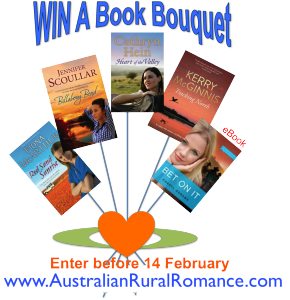 On a different subject, WIN a Valentine’s Day bouquet that never dies on the Australian Rural Romance website! There are 6 book bouquets to be won, each containing five books, including Billabong Bend. WHAT A PRIZE! And all you have to do is sign up to the blog. Too easy …
On a different subject, WIN a Valentine’s Day bouquet that never dies on the Australian Rural Romance website! There are 6 book bouquets to be won, each containing five books, including Billabong Bend. WHAT A PRIZE! And all you have to do is sign up to the blog. Too easy …
VISIT: http://australianruralromance.com/

January 18, 2015
‘The Maxwell Sisters’ and a Book Giveaway!
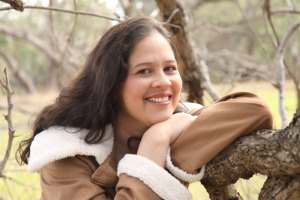 Today please welcome best-selling author Loretta Hill to Pilyara, talking about her latest release The Maxwell Sisters - a heartwarming romantic comedy about three extraordinary women on a journey to find love and rediscover family. This is Loretta’s fifth novel, and a departure from her previous mining theme. It is based at a vineyard in the beautiful Margaret River region of Western Australia. Leave a comment to go in the draw for a chance to win this fabulous book. Now it’s over to you Loretta :)
Today please welcome best-selling author Loretta Hill to Pilyara, talking about her latest release The Maxwell Sisters - a heartwarming romantic comedy about three extraordinary women on a journey to find love and rediscover family. This is Loretta’s fifth novel, and a departure from her previous mining theme. It is based at a vineyard in the beautiful Margaret River region of Western Australia. Leave a comment to go in the draw for a chance to win this fabulous book. Now it’s over to you Loretta :)
Hi Jennifer,
How are you? Happy New Year! It seems like such a long time since I saw you at the RWA conference in Sydney. Hope your writing is thriving. Did you have a nice Christmas?
I’ve just started, “Chapter One” of my next novel. Seven thousand words on the page. Sigh! There’s a long way to go. The ride starts this way every year. In the meantime however, my Margaret River Wine Region story, The Maxwell Sisters finally hits shelves this month! I’m both nervous and excited to see how it will be received. It’s not the same as my other novels. No construction site. No jetties. No teams of men in hard hats. I decided I needed a change of scenery.
My husband and I take our kids to the Margaret River Wine Region at least three times a year. We have family there so we like to visit but also it’s got to be the absolute perfect place to eat, drink and relax. With so many wineries in the area, it’s also the ideal place to get married. So setting my novel here was definitely a no brainer.
“The Maxwell Sisters” is about family and the rivalry and secrets between siblings that always comes out in big events like weddings. I think the relationship particularly between sisters is a very special one. There’s love, competition, envy, protectiveness and pride all at work here. Sisters know about the best of us. They also know the worst.
The three estranged sisters, Phoebe, Natasha and Eve, must return home to the family winery when Phoebe decides to get married there. They need to find a way to put the past behind them and get along in preparation for Phoebe’s big day.
Each of the sister’s has a secret which immediately colours their mood and perspective when they return. Natasha Maxwell, the eldest of the three, has not told anyone she and her husband are separated. Known for being a Sydney corporate bad arse, she is hiding a lot of pain behind her hard wearing, city slicker façade. Still hurting from the ordeal, the last thing she wants is for her family to wade in with advice, so she decides not to tell them and keep her reputation as the woman who has it all intact. This is her biggest mistake.
When she turns up at Tawny Brooks Estate to help prepare for the wedding, the first person she sees is her husband, Heath. He’s found out about the family gathering and has turned up with his own agenda. She can either blow the whistle on their separation and spoil her sister’s wedding or play happy married couple for the four week lead up to the wedding.
I loved writing about Tash’s dilemma. It was so emotionally intense to be forced to be with someone that you both hate and miss at the same time. I don’t think I’ve ever tortured a heroine this much before. I do believe in strong character arcs for my heroines. I think Tash gets to grow a lot in this book because she has such a difficult problem.
I wish I had time to tell you the secrets of Eve and Phoebe but you’ll just have to follow me to Helene Young’s (http://www.heleneyoung.com) blog next week to find out!
Don’t tease us like that Loretta! Many thanks for telling us about your fabulous new book. Readers, don’t forget to leave a comment for your chance to win a copy. You can connect with Loretta at her website, on Twitter or on Facebook.

January 14, 2015
The Moral Universe In fiction.
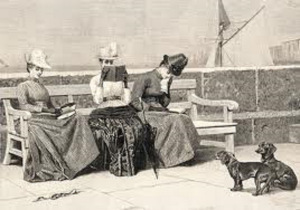 Welcome to our monthly blog chat about the craft of fiction.
Welcome to our monthly blog chat about the craft of fiction.
Today, writing guru Sydney Smith and I talk about the moral universe in stories. (Fellow Penguin author Kathryn Ledson will be back on board sometime in the New Year)
SYDNEY -
Every writer creates their own moral universe in their fiction, even when they don’t realise they’re doing it. When the goodies win and the baddies are sent to prison, or killed, or otherwise defeated, that is evidence of a moral universe at work, one 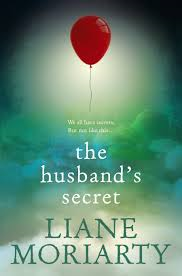 created by the writer. I recently read The Husband’s Secret, by Liane Moriarty, in which a man has kept a dark secret for twenty-eight years. When his wife discovers it, she decides to keep it, too. Because of this moral transgression, a terrible accident occurs in which their daughter, Polly, only six years old, loses her arm. The reader is meant to understand that this is the couple’s punishment for keeping that harmful secret. The accident wouldn’t have happened if the husband had confessed to the police many years ago. Liane chose to punish this couple in this way. The characters are Catholics; the husband has been in permanent Lent ever since he did the deed that had to be kept a secret. And so the punishment has a whiff of the church about it. Liane wants the reader to understand that. This is her moral universe, and though it does carry the odour of myrrh and brimstone, it is one she has created.
created by the writer. I recently read The Husband’s Secret, by Liane Moriarty, in which a man has kept a dark secret for twenty-eight years. When his wife discovers it, she decides to keep it, too. Because of this moral transgression, a terrible accident occurs in which their daughter, Polly, only six years old, loses her arm. The reader is meant to understand that this is the couple’s punishment for keeping that harmful secret. The accident wouldn’t have happened if the husband had confessed to the police many years ago. Liane chose to punish this couple in this way. The characters are Catholics; the husband has been in permanent Lent ever since he did the deed that had to be kept a secret. And so the punishment has a whiff of the church about it. Liane wants the reader to understand that. This is her moral universe, and though it does carry the odour of myrrh and brimstone, it is one she has created.
Jane Austen created a more original moral universe in her fiction. The greatest sin is doing harm to others through selfishness. Again and again we see destructive 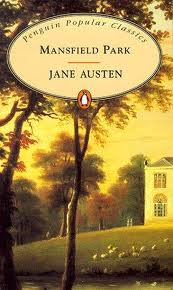 selfishness being punished in social ways. For example, in Mansfield Park, Maria Bertram marries Mr Rushworth for money and commits adultery with Henry Crawford. Her sin is exposed and she is ostracised. Henry Crawford is also punished by losing Fanny Price, the moral agent in the novel who could have saved him. In Jane Austen, a good life is first and foremost one that does no harm.
selfishness being punished in social ways. For example, in Mansfield Park, Maria Bertram marries Mr Rushworth for money and commits adultery with Henry Crawford. Her sin is exposed and she is ostracised. Henry Crawford is also punished by losing Fanny Price, the moral agent in the novel who could have saved him. In Jane Austen, a good life is first and foremost one that does no harm.
I have to admit that I find this business of the moral universe interesting yet problematic. I’m not all that interested in the straightforward universe where the goodies win and the baddies lose in spades, although of course I read fiction that displays this kind of moral equation all the time. But when it comes to creating my own moral universe, the one that operates in my fiction, I find myself hogtied by a superabundance of sympathy for my characters, even those who do bad things.
JENNY -
I also have a great deal of sympathy for villains. Fifteen years as a foster-parent and working in legal aid has convinced me that nobody is evil. Psychopaths and sociopaths are made, not born―their generally tragic back-stories make them who they are. But however they ended up that way, some people are bad, and we all know how to spot them. Lack of empathy and remorse; irresponsibility, selfishness, greed and cruelty. Cheaters, liars, fraudsters, abusers―I’m happy to label these character traits as bad. Of course good people can also display these traits. It’s a matter of degree. Writers rely on their readers sharing this common understanding.
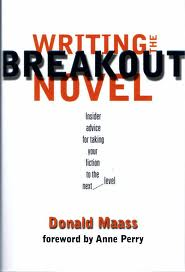 Super literary agent and author Donald Maas emphasises the significance of a moral universe in his book, Writing The Breakout Novel.
Super literary agent and author Donald Maas emphasises the significance of a moral universe in his book, Writing The Breakout Novel.
‘Novels are moral. In fact, all stories convey society’s underlying values, whether they are danced around a campfire or packaged in sleek trade paperbacks. Stories are the glue that holds together our fragile human enterprise.’
He believes that readers want their values validated, but not in a simplistic, moralising way.
‘They may not want to be converted, but they do want to be stretched. They want to feel that at the end of the book their views were right, but they were arrived at after a struggle. A skilful breakout novelist can spin a tale so persuasive that at the end, the reader feels the underlying point was one with which they always have agreed, even though they may have never before considered it.’
I love this, and always keep it in mind when I’m writing. Donald Maas taught me not to be afraid of my own moral compass. Instead, I let it fuel the narrative. Hopefully, that passion will come through the pages and grip my readers. They’ll care about the characters, suffer with them, hate them and love them. So my advice to all budding storytellers is to honour your convictions, whatever they may be. Let them power your story, challenge your readers, and make your story worth the telling. Care, a lot, about the subject of your writing and it will show.
SYDNEY -
Heavens above, I feel like a wimp after those bracing comments, Jenny!
I guess this points to the difference between a good writer and one who doesn’t quite make it. A good writer loves their villains, their antagonists, their baddies, while also understanding that, in order to make the moral point, they have to punish them in some way. What that punishment is depends on the kind of novel being written. The way Liane Moriarty punished her husband and wife was appropriate to the kind of novel she wrote, commercial women’s fiction. I really understood why the wife decided to keep her husband’s secret―if she didn’t, she feared her family would fall apart. She believed her family’s integrity, its ability to retain its emotional and psychological shape, depended on the presence of her husband. Liane implied that there is a higher need than keeping a family together, and that is the moral duty owed to those who suffered because of his dark deed. She got us to this point by creating enormous empathy for the wife, whose POV was privileged over that of her husband. That empathy made the punishment seem all the more devastating.
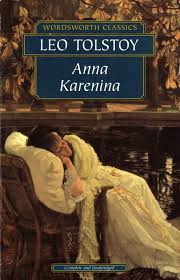 Stories try to teach us about right and wrong, good and bad. Many of them do this in a straightforward way. I personally prefer fiction that delineates the moral problem in more subtle ways. Is Anna Karenina wrong for placing her personal need for sexual love ahead of her child’s need for his mother and her duty to her husband? Or is society wrong for creating customs that allow a woman to pursue her personal desires, so long as she does it discreetly, under the auspices of hypocrisy? I read in an introduction to that great novel that Tolstoy first created a coarse and unlikeable Anna. Over time he modulated her into the sympathetic woman we know. He did this because he understood that a coarse Anna won’t carry the moral point as effectively as a charming, likeable Anna. When she throws herself under the train, we feel the horror of her despair because we loved her, not because she did a selfish thing. At the same time we understand that she had to pay in some way for what she did. Yet there is no sense of resolution in her death―at least, there isn’t for me. The love between Levin and Kitty balances out the story by showing us what is right by confirming our own feeling that love survives best when it does no harm.
Stories try to teach us about right and wrong, good and bad. Many of them do this in a straightforward way. I personally prefer fiction that delineates the moral problem in more subtle ways. Is Anna Karenina wrong for placing her personal need for sexual love ahead of her child’s need for his mother and her duty to her husband? Or is society wrong for creating customs that allow a woman to pursue her personal desires, so long as she does it discreetly, under the auspices of hypocrisy? I read in an introduction to that great novel that Tolstoy first created a coarse and unlikeable Anna. Over time he modulated her into the sympathetic woman we know. He did this because he understood that a coarse Anna won’t carry the moral point as effectively as a charming, likeable Anna. When she throws herself under the train, we feel the horror of her despair because we loved her, not because she did a selfish thing. At the same time we understand that she had to pay in some way for what she did. Yet there is no sense of resolution in her death―at least, there isn’t for me. The love between Levin and Kitty balances out the story by showing us what is right by confirming our own feeling that love survives best when it does no harm.
Which gets me no nearer understanding how to create and enact my own moral universe!
Sydney Smith is a writing mentor, teacher and author of short stories, essays, and The Lost Woman, a memoir of survival. She will soon be releasing The Architecture of Narrative, a book about how to plot and structure fiction. She offers writing tips at www.threekookaburras.com. If you have a question on any aspect of writing, feel free to visit her at Set Your Book Free.

January 10, 2015
Dugongs In Fiction
 I’ve completed the final edits for Turtle Reef, which is due for release with Penguin on the 25th of March. Hopefully I’ll be able to reveal the cover next week. Finishing a novel always evokes mixed feelings – excitement at moving on to a new project; regret at leaving much-loved characters behind. As readers of my books will know, I have animal characters as well as human ones, and sometimes they’re the ones I miss the most. Zenandra, the wasp queen from Wasp Season; Whirlwind, the mysterious brumby mare from Brumby’s Run; Samson, the loyal German Shepherd from Currawong Creek and the charming Magpie geese goslings from Billabong Bend – these characters stay with me long after the final words are written.
I’ve completed the final edits for Turtle Reef, which is due for release with Penguin on the 25th of March. Hopefully I’ll be able to reveal the cover next week. Finishing a novel always evokes mixed feelings – excitement at moving on to a new project; regret at leaving much-loved characters behind. As readers of my books will know, I have animal characters as well as human ones, and sometimes they’re the ones I miss the most. Zenandra, the wasp queen from Wasp Season; Whirlwind, the mysterious brumby mare from Brumby’s Run; Samson, the loyal German Shepherd from Currawong Creek and the charming Magpie geese goslings from Billabong Bend – these characters stay with me long after the final words are written.
Turtle Reef is no different. Set at the southern tip of the Great Barrier Reef, the story includes a wide range of marine animals (and horses of course). Some like Kane, the dolphin, and Einstein, the octopus, are characters in their own right. Others such as the sea turtles and dugongs fuel the narrative in more general ways.
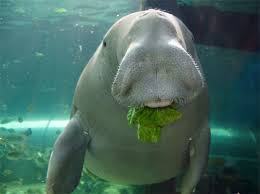 Out of curiosity I decided to research the place of dugongs in fiction. It surprised me to discover that there are very few books about these unique animals, and all of them seem to be for children. Dabu Grows Up: The Tale of a Dugong is a picture book set in the tropical waters of the Torres Strait. Dabu is a young dugong whose mother is taken by hunters. Dabu learns about life, respect for the natural world, loneliness and friendship as he explores a tropical reef, finally deciding that to survive he must return to his herd. Denis, the Dugong follows the adventures of an Arabian dugong, and is enriched with details of the surrounding flora and fauna. The book is part of a series stressing the importance of conservation in the Arabian Peninsula. Dipanker the Dugong is a similar book set in India. That’s it – all I could find. Please comment if you know of any others. I’m thrilled to think that my new book Turtle Reef will help raise the profile of these enchanting and under-represented animals in fiction.
Out of curiosity I decided to research the place of dugongs in fiction. It surprised me to discover that there are very few books about these unique animals, and all of them seem to be for children. Dabu Grows Up: The Tale of a Dugong is a picture book set in the tropical waters of the Torres Strait. Dabu is a young dugong whose mother is taken by hunters. Dabu learns about life, respect for the natural world, loneliness and friendship as he explores a tropical reef, finally deciding that to survive he must return to his herd. Denis, the Dugong follows the adventures of an Arabian dugong, and is enriched with details of the surrounding flora and fauna. The book is part of a series stressing the importance of conservation in the Arabian Peninsula. Dipanker the Dugong is a similar book set in India. That’s it – all I could find. Please comment if you know of any others. I’m thrilled to think that my new book Turtle Reef will help raise the profile of these enchanting and under-represented animals in fiction.
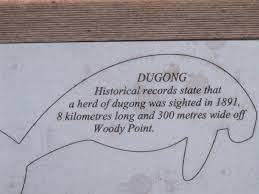 Dugongs belong to the order Sirenia, named after the legendary sirens of the sea. Their closest living relatives are the manatees and they’re also distantly related to elephants. Dugongs are found throughout the Indo-pacific region, but over the past century many populations have disappeared. Australia is their last stronghold, but even here they are in dramatic decline. Threats to dugongs are all man-made: entanglements in shark and fishing nets, marine debris, loss of sea grass meadows due to dredging and agricultural run-off, traditional hunting and collisions with boats. I’ve always loved these gentle giants of the sea that have existed on earth for 45 million years. What a tragedy if after all this time they went extinct on our watch! :(
Dugongs belong to the order Sirenia, named after the legendary sirens of the sea. Their closest living relatives are the manatees and they’re also distantly related to elephants. Dugongs are found throughout the Indo-pacific region, but over the past century many populations have disappeared. Australia is their last stronghold, but even here they are in dramatic decline. Threats to dugongs are all man-made: entanglements in shark and fishing nets, marine debris, loss of sea grass meadows due to dredging and agricultural run-off, traditional hunting and collisions with boats. I’ve always loved these gentle giants of the sea that have existed on earth for 45 million years. What a tragedy if after all this time they went extinct on our watch! :(

January 3, 2015
The Devil Inside

Sydney Smith
While I’m editing Turtle Reef (out with Penguin April 2015) writing mentor extraordinaire Sydney Smith has been guest blogging for me. Here is her second last post, an insight into her creative process and why I call her the Story Whisperer. Her mind is always choc-a-block with plots!
The Writing Devil
Every time I finish a writing project I go through a period of anxiety where I’m waiting for the next project to materialise. That sounds banal, like waiting at a train station for the 6.15 to pull up. That is far from the case. My life feels pointless and empty. I tell myself this is how my life will be when I’m too old to write anymore. (Jennifer – Don’t worry Sydney I don’t think you ever get too old to write!)
So I play plot games with myself.
I’m a plot geek. I can work up a rough plot―protagonist, antagonist, premise, setting―in a matter of minutes. I can develop it over a few days. By the end of the week I’ll have what looks to outsiders like a workable story. While I’m doing this I believe in it utterly. I believe it’s real, believe it’s ready to write. All it needs is that final step, that teeny tiny step into commitment.
I will talk to my friends about this plot, that plot, like an Old Testament prophet possessed by a vision. They are as convinced as I am that the novel is poised to flame from my mind onto the computer screen. They ask me about these novels. ‘Have you started writing yet?’ My answer is always a dismal, ‘No.’
Every night I go to bed hoping to wake the next morning with the writing devil in me, the one that propels me to my computer and dictates to me words of fire. And each morning, I wake un-possessed.
I go for coffee with a writing friend, I get an email from a friend about her novel-in-progress, I have a session with a student, and every time, they ask me if I’ve started writing yet. Some of them understand why I haven’t. Some are baffled. There are novelists for whom writing is a matter of will. (Jennifer – Yep) For me, writing is always an act of demonic possession. If the devil hasn’t crowded into my mind, raving in tongues, there is no way I can write. Writing a novel is a huge undertaking, demanding hundreds of hours of screen time, and many hundreds of hours of thinking. I can’t do it without the writing devil.
In the last three months, since I finished The Architecture of Narrative, I have worked on the following plot ideas:
Dusk – a supernatural creature who enters a family and destroys it one member at a time.
The Bridge – crime novel about a man who was wrongly convicted of murder.
Rosings – a sequel to Pride and Prejudice.
Atthis – a fantasy novel about a girl who trains as a monster-slayer.
Leila – a woman who works as an assassin.
The Water Serpent – a fantasy novel about a young woman who can manipulate Time.I’m not a religious person―despite all the religious imagery I’ve used―but as week followed week and none of these plot games turned into something more, I went to bed praying to the god of my imagination to bring me a story to write. I got to the stage where I was frightened I would never write again.
Then a week ago, I woke one morning with the writing devil prodding me with his red-hot pitchfork. The novel was a plot game I had briefly played with back in 2013, while I was visiting the Blue Mountains. It hadn’t even whispered to me while I was playing with the plots I listed above. Yet it must have been growing in a corner, because here it is and I’ve written over 30,000 words.
 Well done Sydney. Hope the devil won’t desert you!
Well done Sydney. Hope the devil won’t desert you!
Sydney Smith is a writing mentor, teacher and author of short stories, essays, and The Lost Woman, a memoir of survival. She will soon be releasing The Architecture of Narrative, a book about how to plot and structure fiction. She offers writing tips at www.threekookaburras.com. If you have a question on any aspect of writing, feel free to visit her website.

December 29, 2014
The Butch Tales 2: The Boy King.
Well, Christmas has come and gone, and I’m still madly editing Turtle Reef to meet a January 7th deadline. Author and writing mentor Sydney Smith is guest-blogging for me over this period – about her cats! Here is the second instalment …
The Butch Tales 2: The Boy King
I left the shared house where I met Daka and the two of us moved into a flat in Brunswick. It had gardens for her to play in, with lots of places she could hide and spy on other felines. I left the lounge room window ajar to let her climb in and out as she pleased. She was an old cat and arthritic. I placed a chair outside the window, to help her get inside.
Two years later, Daka sickened. It hurt her to eat and she left messes outside the door of my upstairs neighbour. I took her to the vet, a man with wildly romantic looks and a sharp tone of voice. Though he was irritable with humans, he was firm and gentle with Daka. He told me she had to be put to sleep. He let me stay with her while he shaved her forepaw and injected the drug. All the strength melted from her body.
I cried over her. Then I went home, and the moment I lay down on my bed to grieve properly, a cat flea, one of Daka’s little tenants, jumped onto my arm and bit me. I cried even more. Inside that flea a little bit of Daka lived on, and that somehow was more heart-wrenching than her death.
It took me two years to get over Daka. It was lonely to live in my flat with no animal. But every time I thought about adopting someone new, that grief for Daka welled up again. But grief will go, if you let it, and after two years in mourning I was ready. I wasn’t sure whether I wanted a cat. Maybe I’d get a dog. Or a budgie. Whatever it was I’d call it Butch. In particular, Butch the Budgie tickled my sense of humour. But I wasn’t set on getting a bird. I would see what caught my fancy.
One day I was walking along Rathdowne Street in Carlton, one of the routes I took on my expeditions into the big world after a morning spent at my computer. A vet clinic there kept a big cage of kittens. I had often stopped outside the window to watch them climb the stairs inside their cage and tumble through the trapdoor. On this day, I went inside.
I wanted a female, but they’d all been taken. I was ready for an animal, and wouldn’t be put off by a little matter of
gender. The vet nurse opened the cage. A black kitten with a bushy tail as big as he was stepped out and allowed himself to be carried, a boy king riding his human palanquin to the counter. From there he jumped to the floor and explored the reception area with such a singular air of eccentric personality that I fell for him.
His ragdoll mother had bequeathed to him the distinctive white markings on his black face, his white shirt front, the dab of white at the end of his black tail and his king-sized paws. I took him home. He meowed all the way.
Daka was my first pet, and she had come to me as an adult, set in her ways. I consulted my cat-owning neighbour. What should I do with a kitten? How should I train him? Where should he sleep? Daka had slept with me but I thought I ought to train Butch differently. ‘Shut him in the kitchen at night,’ she said. ‘He’ll learn to sleep by himself.’ I made up a bed for him with an old jumper in a cardboard box, and added a toy cat so that he wouldn’t feel lonely.
Butch had lived all his short life with his brothers and sisters. He had never been alone. A synthetic toy cat didn’t count as company. Moreover, he had a strong sense of what was due to him as a boy king. The moment I shut the kitchen door, he set up an imperious meowing. I hardened my heart for about ten seconds, and then gave in. From then on, it was Butch who trained me. He knew exactly what he wanted and would stop at nothing to get it.
In those days I was working part-time at the writers’ centre. Every morning when I went to work, Butch sprinted around the flat, screaming at the top of his lungs. After two such mornings, I couldn’t take it anymore. I packed his lunch and some kitty litter, put him into his carry case, and took him to work on the tram.
As Butch grew bigger he wanted to go outside. I opened the front door for him. I’d sit there reading a manuscript I was assessing while he ventured out into the big world of the garden. Every few steps he’d look back at me and meow. ‘It’s OK, Butch. I’m right here.’ Soon I stopped sitting at the open door and he would come and go as he pleased. Once I heard him plaintively calling. I went outside and found him in a tree. I thought he was stuck and climbed up to get him. He meowed his protests, and as soon as I put him on the ground, he quickly scaled the trunk and sat on a branch, singing.
When Butch was confident in the garden, he wanted to go further afield. In the evening, soon after dark had closed over Brunswick, I took him for walks around the block. Was this normal? I knew of only one wandering cat, a Russian Blue who went for walks on the end of a leash. Butch seemed to think it was perfectly natural, and by this time, I knew better than to argue.
Other cats were out there, adult cats, big cats with territories. They hissed at him, but maybe because he was a kitten, they didn’t hurt him. One night we met a woman taking her seven cats for a walk to the local school playground, where they could run around. The beefy grey tom built like a rugby forward, who was really in charge of the expedition, strolled across the road to greet us with his round, smiling face. He looked benignly on Butch before sauntering back to his team.
One evening Butch demanded his walk twenty minutes before a show I wanted to see came on TV. I asked him to wait, but he insisted. The boy king had never heard of delayed gratification. I kept an eye on the time, thinking we could do the walk quickly and I could get back for my show. Butch had other ideas. He lingered in every interesting nook and cranny. He especially loved a rose garden up the street. At five minutes before my show started, I left him there and raced home. An hour later, riven by guilt and worry for his safety, I returned to the rose garden. ‘Butch?’ An answering meow. He had waited for me all that time, hiding under a bushy fuchsia.
Coming soon – The Butch Tales 3: Mouse-hunter.
 Sydney Smith is a writing mentor, teacher and author of short stories, essays, and The Lost Woman, a memoir of survival. She will soon be releasing The Architecture of Narrative, a book about how to plot and structure fiction. She offers writing tips at www.threekookaburras.com. If you have a question on any aspect of writing, feel free to visit her website.
Sydney Smith is a writing mentor, teacher and author of short stories, essays, and The Lost Woman, a memoir of survival. She will soon be releasing The Architecture of Narrative, a book about how to plot and structure fiction. She offers writing tips at www.threekookaburras.com. If you have a question on any aspect of writing, feel free to visit her website.



